#shahzia sikander
Text

Daily Painting
Shahzia Sikander
READY TO LEAVE (1997)
72 notes
·
View notes
Text

Shahzia Sikander (Pakistani, 1969) - SpiNN (I) (2003)
300 notes
·
View notes
Text



Last week, the Madison Square Park Conservancy unveiled its latest commission, Shahzia Sikander’s three-part installation Havah… to breathe, air, life.
The Pakistani-American artist, best known for her painting practice that encapsulates the essence of Indo-Persian miniature works through a feminist lens, translated her specific skillsets across material and scale to also introduce the first female subject upon the ten plinths of the Manhattan Appellate Courthouse’s rooftop (there are other female figures elsewhere on the building), across the street from the park.
Rhea Nayyar spends an afternoon in the park with the artist’s golden monuments in her latest article.
44 notes
·
View notes
Photo


- Shahzia Sikander, "Witness" (2023)
9 notes
·
View notes
Photo
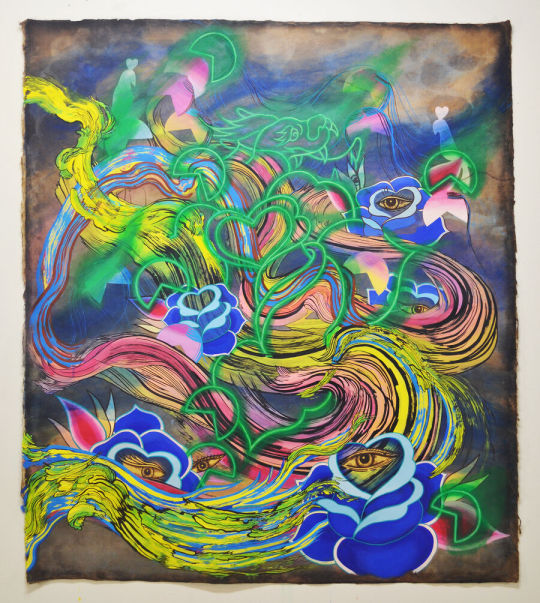
How Artists of the Asian Diaspora Are Drawing on Traditions from Their Heritage
Across various mediums, contemporary artists from the Asian and Pacific Islander diaspora draw on traditional art techniques. From Kashmiri embroidery to Native Hawaiian kapa to Indigenous Filipino banig weaving, new generations are not only embracing and preserving these legacies, but also expanding the artistic possibilities of these methods.
While today, these cultural practices are frequently celebrated, for some, it has been a protracted struggle to have their traditions recognized as legitimate.
For Artsy, I highlight five artists whose practices are influenced by traditional techniques.
Image: Jiha Moon, Yellowave (Nocturnal), 2022, Mindy Solomon Gallery
#my writing#art#asian diaspora#asian american#asian pacific american heritage month#apahm#aapi month#shahzia sikander#jiha moon#jagdeep raina#nanea lum#bhen alan
4 notes
·
View notes
Photo
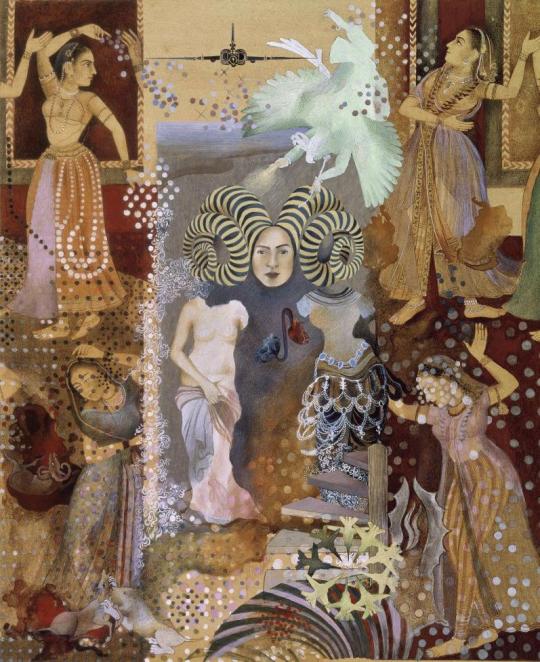
MWW Artwork of the Day (3/25/23)
Shahzia Sikander (Pakistani-American, b. 1969)
Pleasure Pillars (2001)
Vegetable color, dry pigment, watercolor & tea on wasli paper, 36.8 x 30.8 cm.
Sean Kelly Gallery, New York
The 1990s witnessed some of Sikander’s most powerful breakthroughs. A more personal and signature style emerged with the appearance of invented forms and the integration of abstract motifs within the luscious infrastructure of miniature paintings. A proliferation of female figures extracted from a wide range of art history sources was unleashed, many borrowed from the traditional miniature paintings of South and Central Asia. "Pleasure Pillars" exemplifies the intricacies of an epic vision realized within the tight spaces of a miniature painting. Overlapping or isolated figures inhabit undefined spaces embellished with abstract patterns, rich swaths of color, and other fine details that are disorienting yet engaging.
6 notes
·
View notes
Text
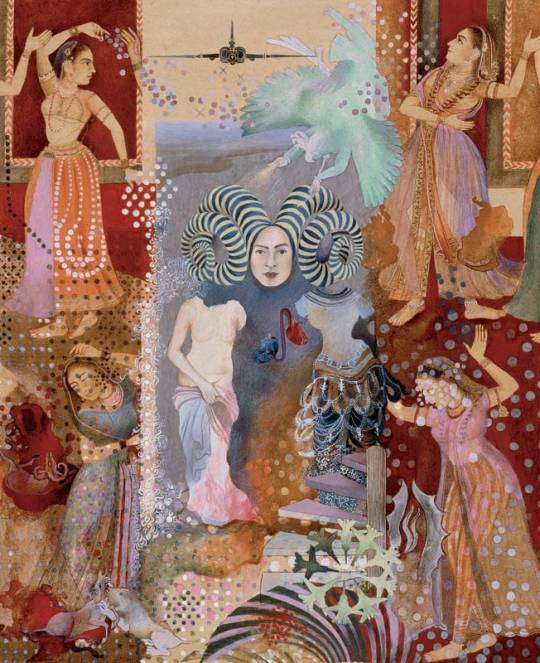
Shahzia Sikander.
Pleasure Pillars. 2001.
Watercolor and dry pigment on Wasli paper.
17" x 12"
4 notes
·
View notes
Photo

Shahzia Sikander (Pakistani American, b. 1969) - The Perennial Gaze
21 notes
·
View notes
Photo

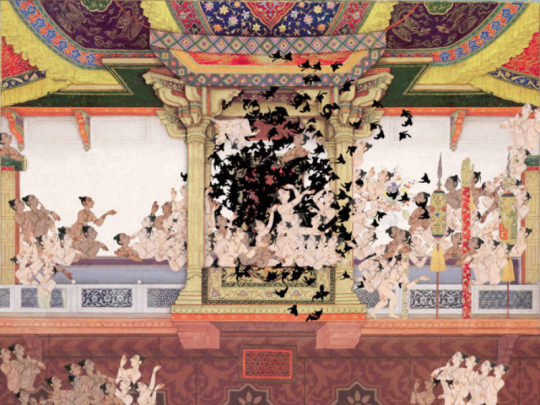
shahzia sikander
1. “Eye-I-ing those Armorial Bearings,” 1989–97
2. “SpiNN (III),” 2003
Watercolor on tea-stained wasli paper
15 notes
·
View notes
Photo

Maligned Monsters, 2001
Shahzia Sikander
6 notes
·
View notes
Text

Daily Painting
Shahzia Sikander
WHO'S VEILED ANYWAY? (1997)
9 notes
·
View notes
Text
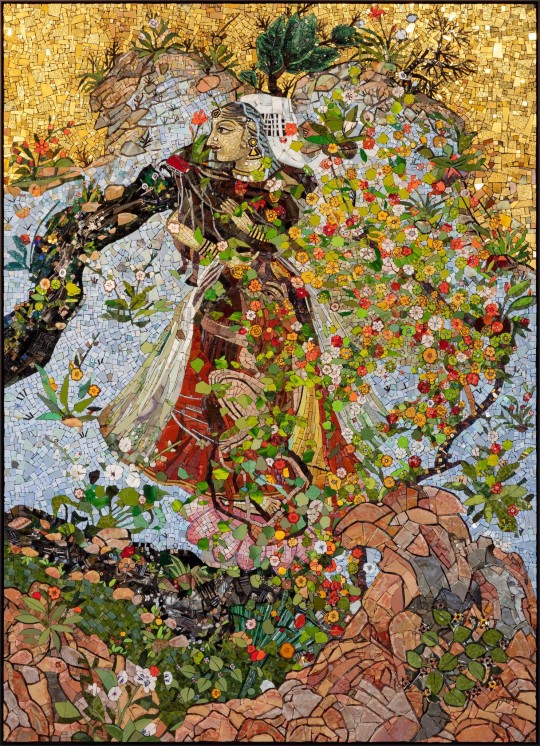
Shahzia Sikander (Pakistani-American, 1969) - Touchstone (2021)
157 notes
·
View notes
Text
Texas is dumb af

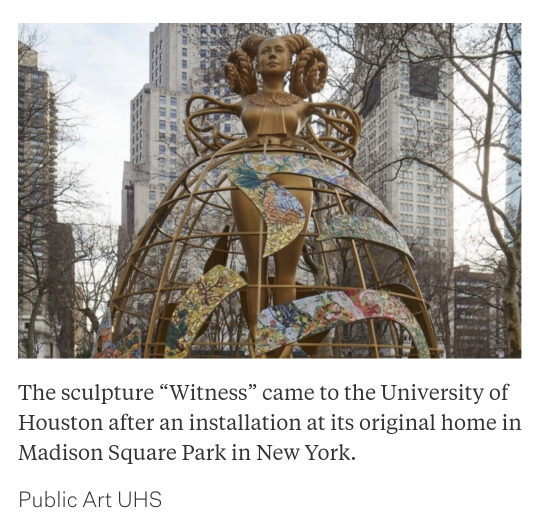
Don't let religious groups ruin the right of freedom of expression.
"NEWS
U of Houston Cancels Art Event for Sculpture Deemed ‘Satanic’
March 05, 2024
The University of Houston canceled an event to introduce a new sculpture exhibited on campus after an outpouring of objections from antiabortion groups. The activists claim the sculpture displays satanic imagery and abortion rights messaging.
University officials say the event never happened last week because the artist was unavailable to give a scheduled talk. But the artist wrote on social media that she wasn’t the one who canceled.
The sculpture, “Witness,” by Pakistani American artist Shahzia Sikander, is slated for an eight-month stay at the Public Art of the University of Houston System collection. It features an 18-foot woman with thick, gold braids that resemble rams’ horns and arms and legs that look like roots. The woman also wears a hooped skirt with mosaic details and a distinctive collar that is an homage to the signature lace judicial collars worn by late U.S. Supreme Court justice Ruth Bader Ginsburg."
Antiabortion groups say the sculpture being exhibited on campus has “satanic” imagery and reflects the artist’s stance on abortion rights.
#texas news#texas is an embarrassment#houston#university of houston#conservatives cancelling shit#Shahzia Sikander#Texas Right to Life is trash
0 notes
Text

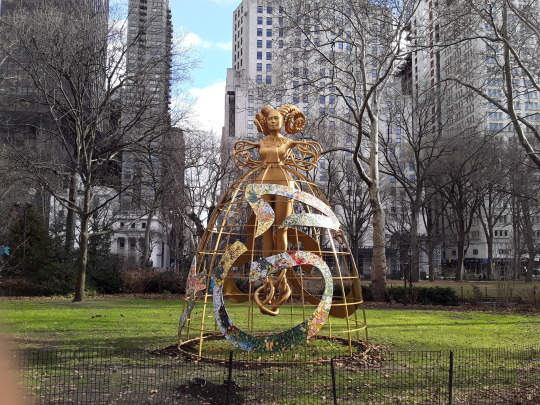







"Witness" by Shahzia Sikander.
0 notes
Photo
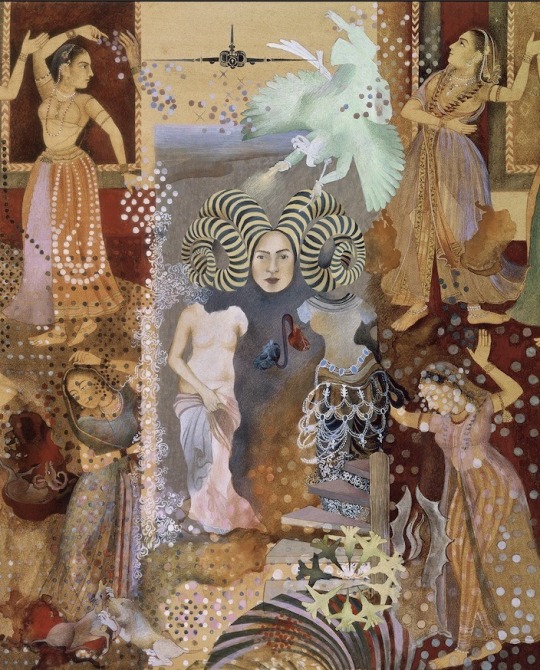
How Shahzia Sikander Remade the Art of Miniature Painting https://newyorker.com/culture/culture-desk/how-shahzia-sikander-remade-the-art-of-miniature-painting?utm_source=twitter&utm_medium=social&utm_campaign=onsite-share&utm_brand=the-new-yorker&utm_social-type=earned… via @NewYorker
0 notes
